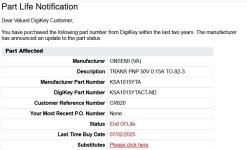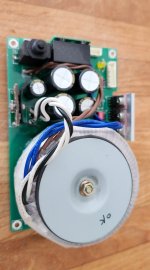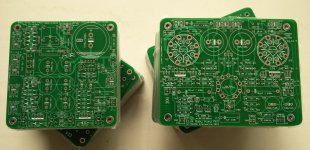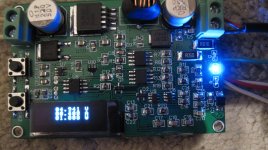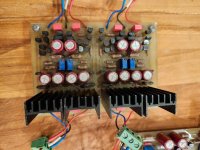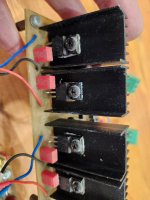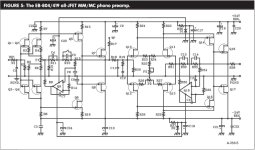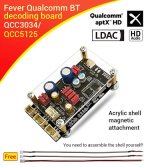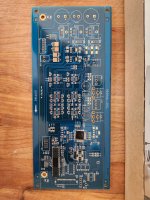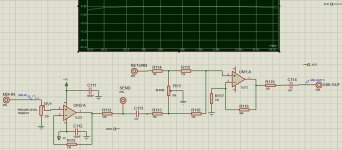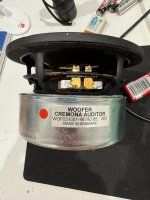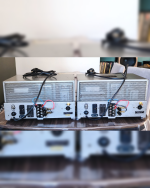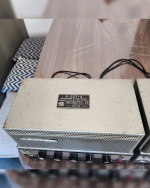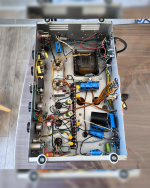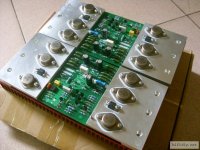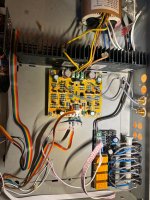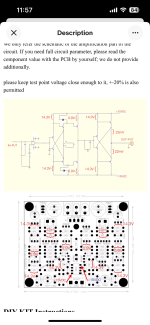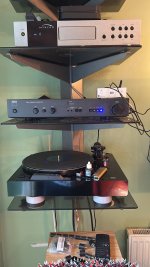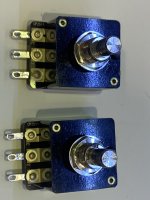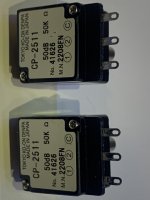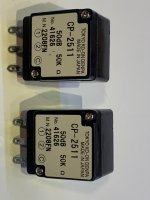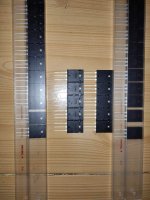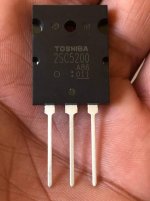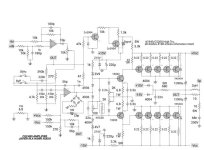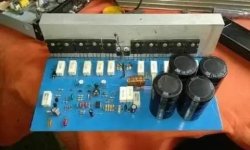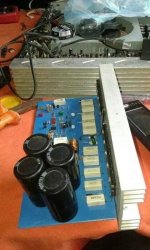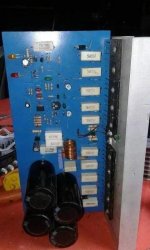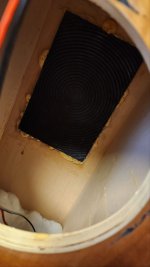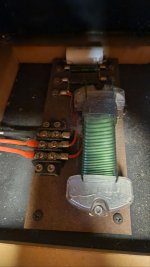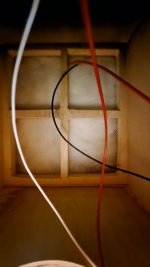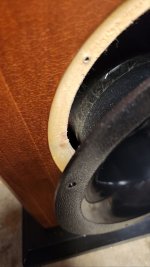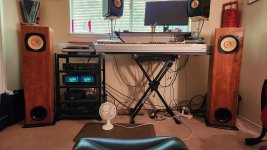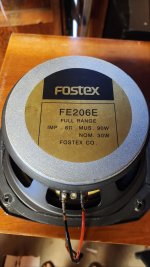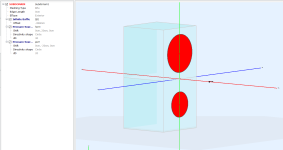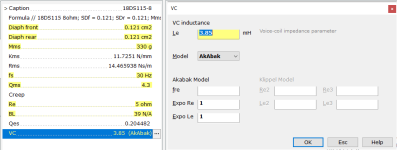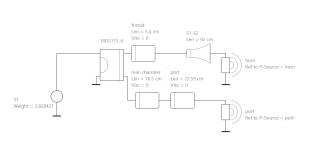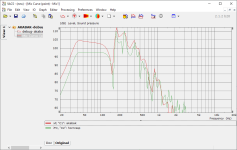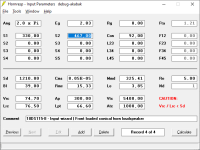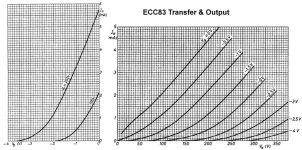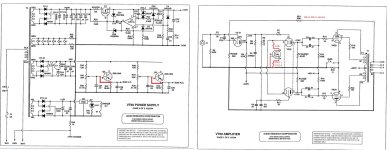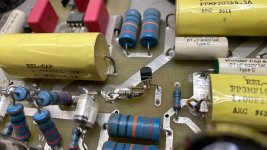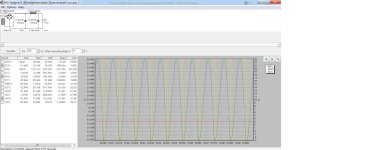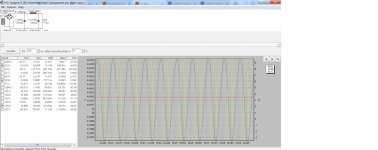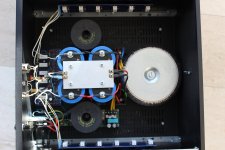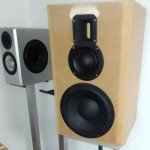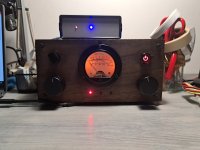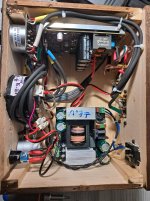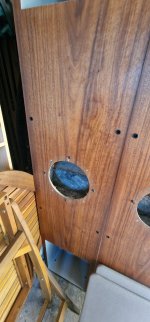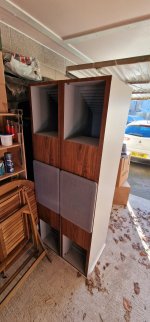A friend of mine built two Aleph 2 mono blocks for me about 17 years ago, long before I started doing any building myself. They were fine but run very, very hot (in hindsight the Modushop 4U 400mm cases are too small) and there was something not quite right when you compared them to my factory Aleph 3. I know, a 2 will sound different than a 3, but the 2s just don't sound as relaxed (for want of a better word) than the 3 or for that matter my diy F4s.
I knew some of the parts he used were not what I would choose today, so the cement block 1R and 0R47 resistors will be replaced by 5W metal films. The 220uF caps of unknown brand will also be replaced, but I am not sure yet what to use. I have 220uF Silmic IIs (25V and 35V) and Nichion Muse FG (25V) in my drawer and some Nichion Muse KZ (50V) and Nichion Muse ES bipolar (50V) on order. Any suggestions which to put where would be appreciated.
I also noted that in an old thread, the ZVP3310A was mentioned as a good replacement for the 9610s.
http://www.diyaudio.com/forums/pass-labs/172987-zvp3310-good-choice-input-fet-aleph-30-a.html
It as an old thread, so I would be interested to hear if other people have since tried this and what their results were. I know they are not in stock at Mouser, Digikey or Farnell/Element14 but I think I bought about 25 ZVP3310A many years ago, so could hope to get a few matched pairs (if I can find them haha).
The power supply currently consists of:
- Talema TRT1000240 1kVA 230V primary 2 x 40V 12.5A secondaries
- Standard GBC type bridge rectifiers
- CLC :
- 47000uF/63V F&T GM
- Intertechnik aircoil 2.2mH 0R46 (1.4mm copper)
- 47000uF/63V F&T GM
The first problem I noted was of course that in this configuration, the rails will be much higher than spec (according to psu designer about 51V with an 11mV ripple). As the mains voltage where I currently live is 240V, I can expect another 2V, giving me rails of just over 53V. I understand from the service manual that the circuit will adjust bias automatically, resulting in a lower bias, so I expect dissipation to remain 300W per monoblock.
What alarmed me is that according to psu designer, the ripple the first 47000uF cap will see is double the rating of the cap (max. 13.2A according to datasheet). Not good.
The amp has not seen that many hours (I have too many amplifiers
😎) but the first cap could be seriously aged by this maltreatment. How can I check the condition of the cap? If it is still OK, I assume swapping the hard driven first cap with the hardly stressed second one will prolong life?
Obviously, the ripple the first cap sees has to be significantly reduced. Ideally the rail voltage should be lowered as well (the circuit will automatically increase the bias to accomodate for this). Just adding capacitance does not seem the best solution.
I remembered something EUVL said about adding resistance in the psu (when I tried to get rid of hum in my Aleph H). I played around with psu designer and came up with the following simple solution: Convert the CLC design into RCLC by adding 0R75 resistance before the first cap. (N.B. I also tried LCRC using the same values, but psu designer showed excessive voltages experienced by the bridge rectifier and a higher ripple at the load).
According to psu designer, with the RCLC psu the first cap ripple is less than 50% what it was previously (now within datasheet spec) and the rail voltage drops to 45V (from 51V). The resultant load ripple (simulated as 17R in CLC and 13R is RCLC to give about 150W dissipation per rail, to compensate for the circuit automatically adjusting the bias to keep dissipation constant) hardly changes (I surmise it is probably more dependent on the size of L and C2).
I assume this solution will add quite a bit of heat (psu designer calculates 6A RMS at 4V5 RMS through the 0R75 resistor, so about 54W per mono block). I will have to add fans for these Aleph 2s anyway, and especiially to survive the extra heat. I have some old PC fans of various sizes but am unsure if placement in the enclosure will give enough relief. Has anyone tried this?
Having had plenty of trouble with radiated noise recently while testing a newly built pumpkin in my shed, I am wondering if the placement of the coils in my amps could be improved upon. Ideally I would move the transformer and coils to another box (perhaps even try a regulated psu) but a 4 box stereo amplifer really is a bit too much. I have attached a photo of the current layout (don't take any notice of the old soft start to the right of the bottom coil; it has since been replaced by an NTC).
Will a steel cover over the transformer (if I can find one that big) and/or coils (assuming I have enough room to do this) make a big difference?
Any suggestions are welcome!
